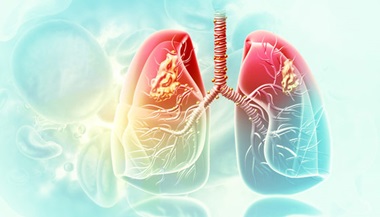Chronic Obstructive Pulmonary Disease
What is chronic obstructive pulmonary disease (COPD)?
COPD is a term that refers to a group of lung diseases that can interfere with normal breathing. According to the American Lung Association, more than 13 million Americans suffer from COPD. It is the third leading cause of death in the U.S.
What are the different types of COPD?
The two most common conditions of COPD are chronic bronchitis and emphysema. Some doctors agree that asthma should be classified as a chronic obstructive pulmonary disease, while others do not. A brief description of asthma is included below:
|
What is chronic bronchitis?
These changes may result in breathing problems, frequent infections, cough, and disability. |
What is pulmonary emphysema?
This can cause a decrease in respiratory function and breathlessness. Damage to the air sacs is irreversible and results in permanent "holes" in the lung tissue. |
What is asthma?
|
What causes COPD?
The causes of COPD are not fully understood. It is generally agreed that the most important cause of chronic bronchitis and emphysema is cigarette smoking. Other causes such as air pollution and occupational exposures may play a role, especially when combined with cigarette smoking. Heredity may also be a factor.
Are there rehabilitation programs for COPD?
The goals of COPD rehabilitation programs include helping the patient return to the highest level of function and independence possible, while improving the overall quality of the person's physical, emotional, and social life. Attaining these goals help people with COPD live more comfortably by improving endurance, providing relief of symptoms, and preventing progression of the disease with minimal side effects.
In order to reach these goals, COPD rehabilitation programs may include the following:
-
Medication management
-
Exercises to decrease respiratory symptoms and improve muscle strength and endurance
-
Respiratory treatments to improve breathing ability
-
Assistance with obtaining respiratory equipment and portable oxygen
-
Methods to increase independence with activities of daily living (ADLs)
-
Exercises for physical conditioning and improved endurance
-
Stress management, relaxation exercises, and emotional support
-
Smoking cessation programs
-
Nutritional counseling
-
Patient and family education and counseling
-
Vocational counseling
Who is on the COPD rehabilitation team?
COPD rehabilitation programs can be conducted on an inpatient or outpatient basis. Many skilled professionals are part of the pulmonary rehabilitation team, including the following:
-
Pulmonologist
-
Respiratory therapist
-
Physiatrist
-
Internist
-
Rehabilitation nurse
-
Dietitian
-
Physical therapist
-
Occupational therapist
-
Social worker
-
Psychologist/psychiatrist
-
Recreational therapist
-
Case manager
-
Chaplain
-
Vocational therapist
Most COPD health professionals consider the patient and his or her family part of the rehabilitation team. In fact, in order to develop the most appropriate care possible, many teams refer to the need for equal "partnerships" between patients and medical teams.



